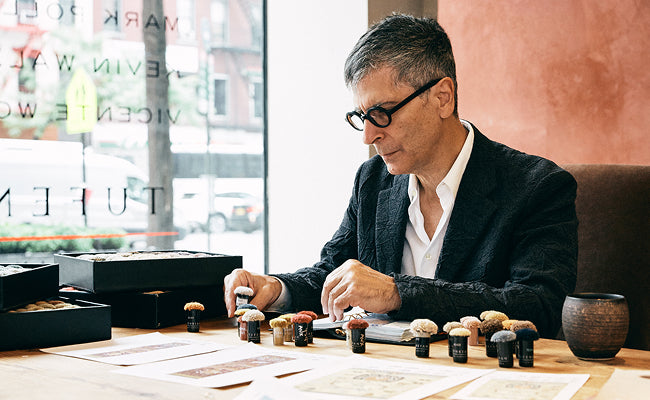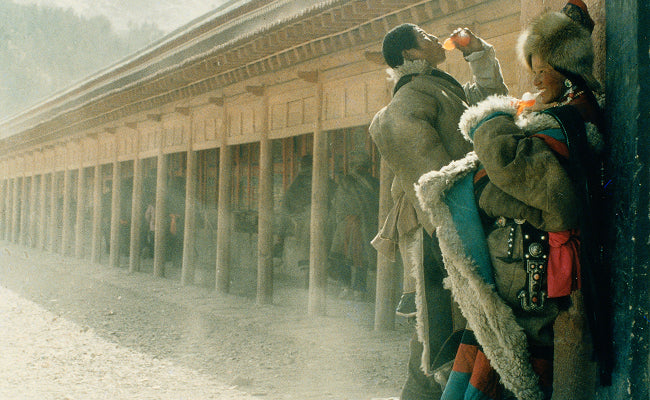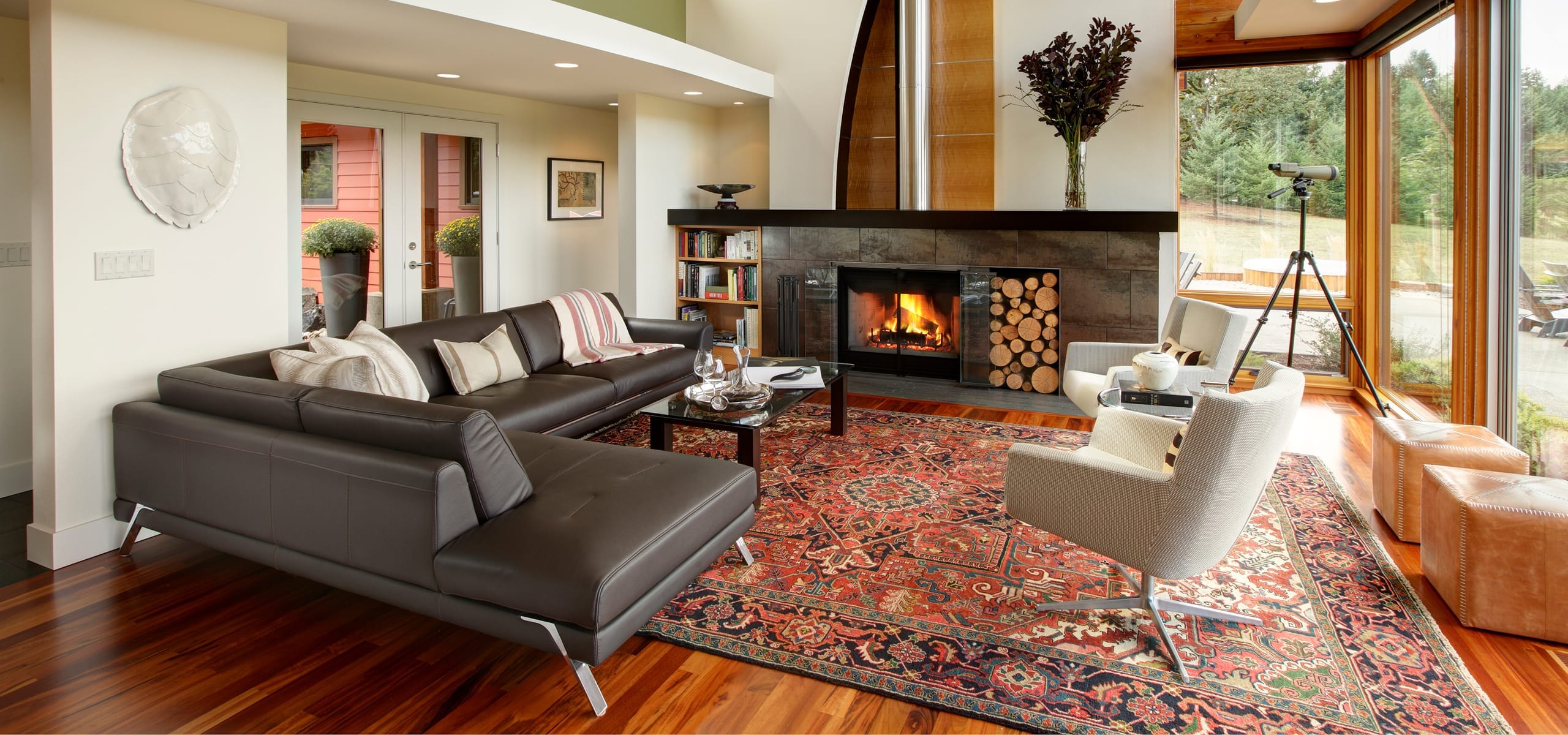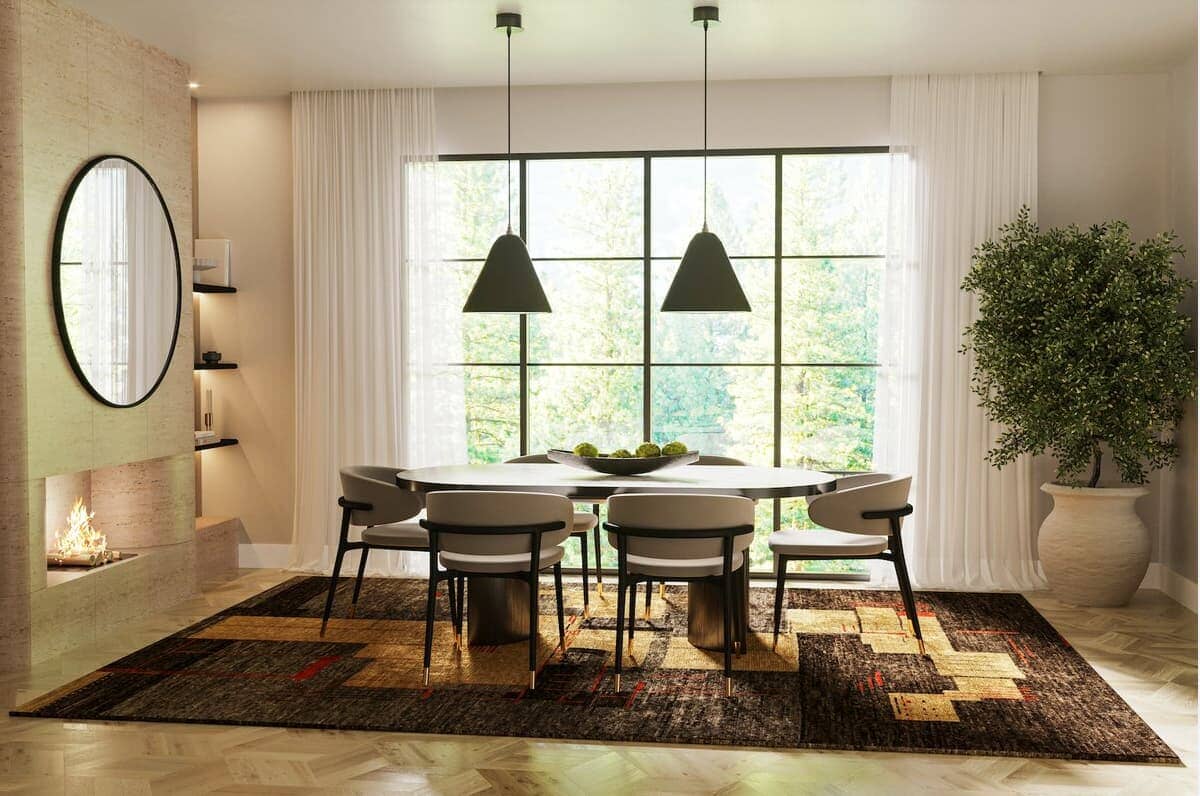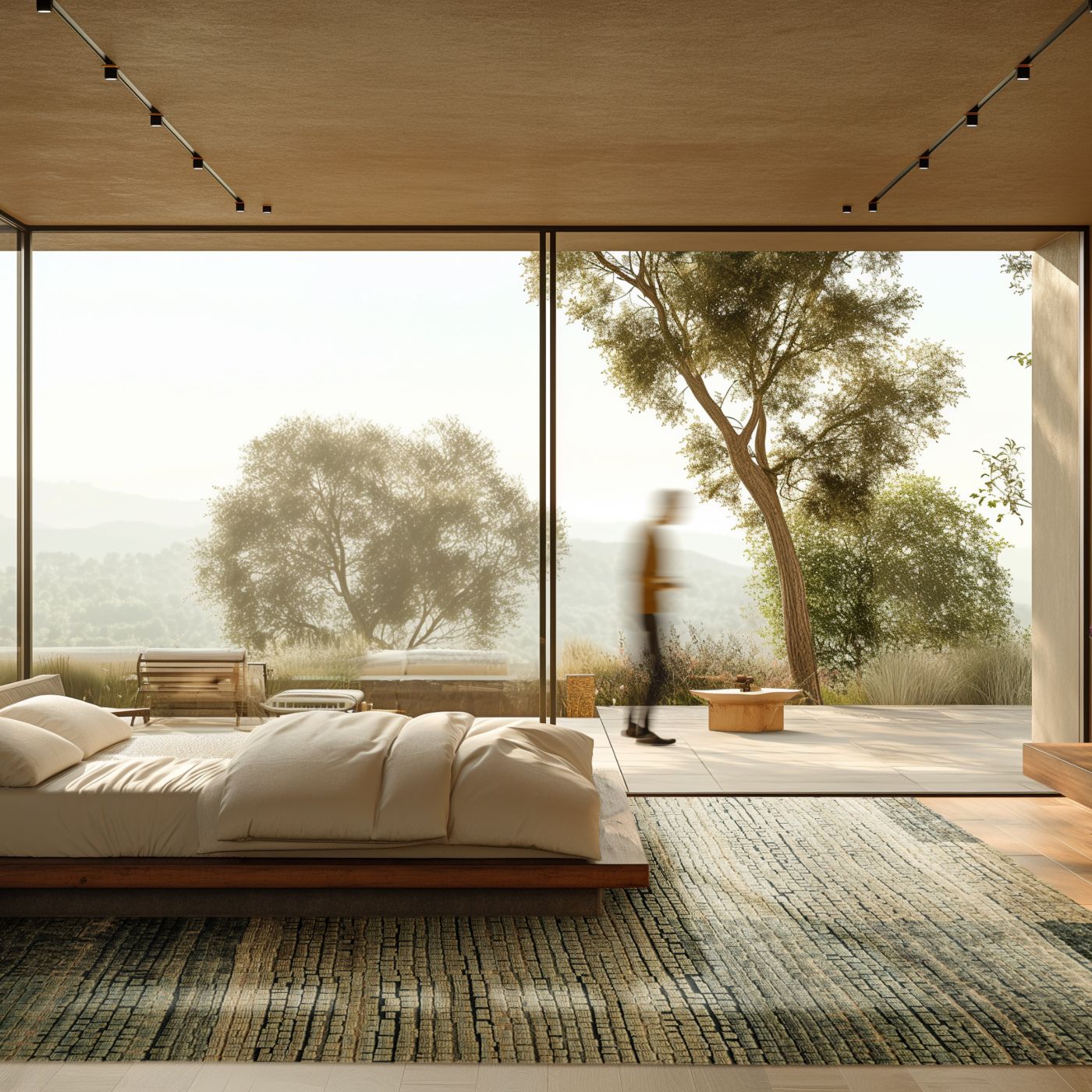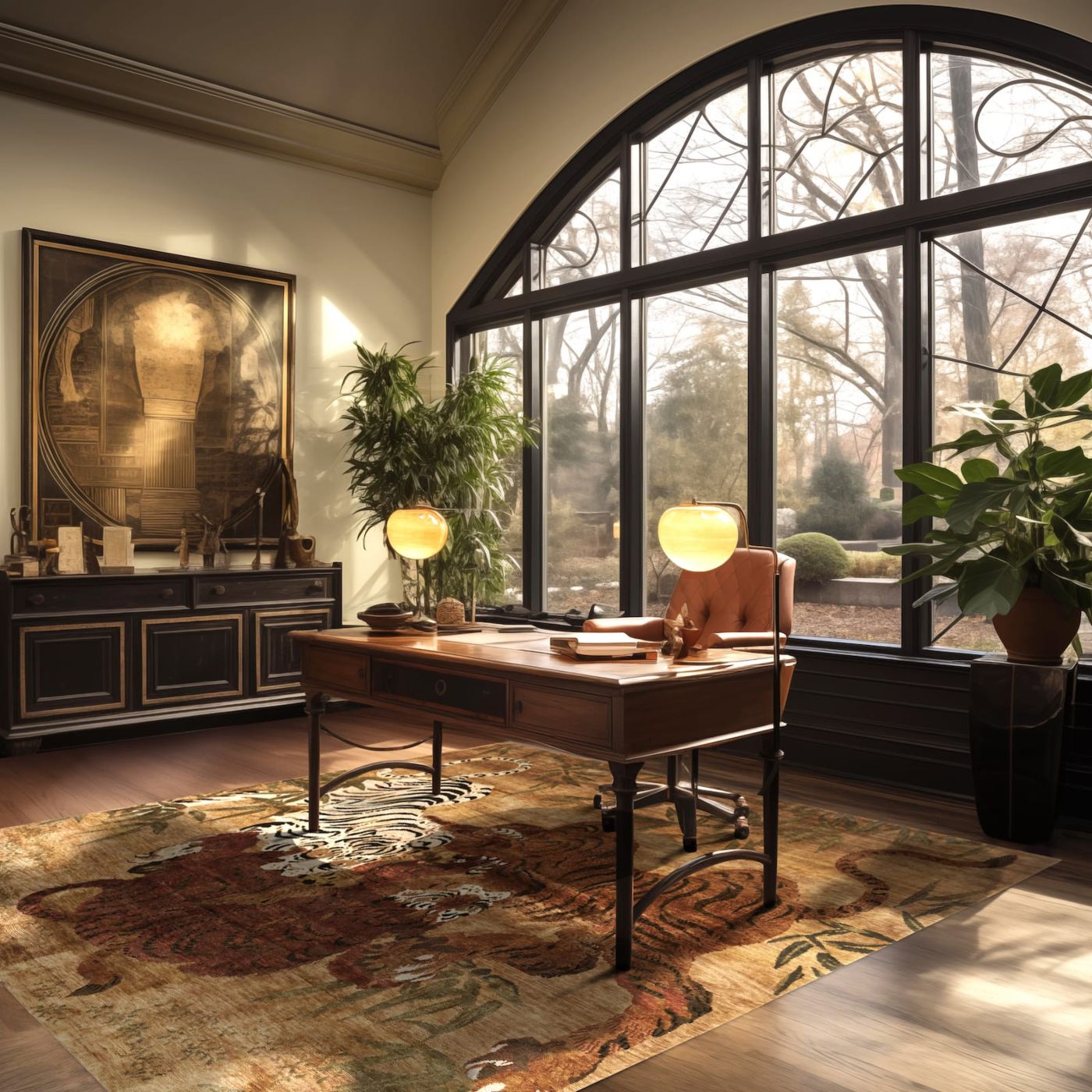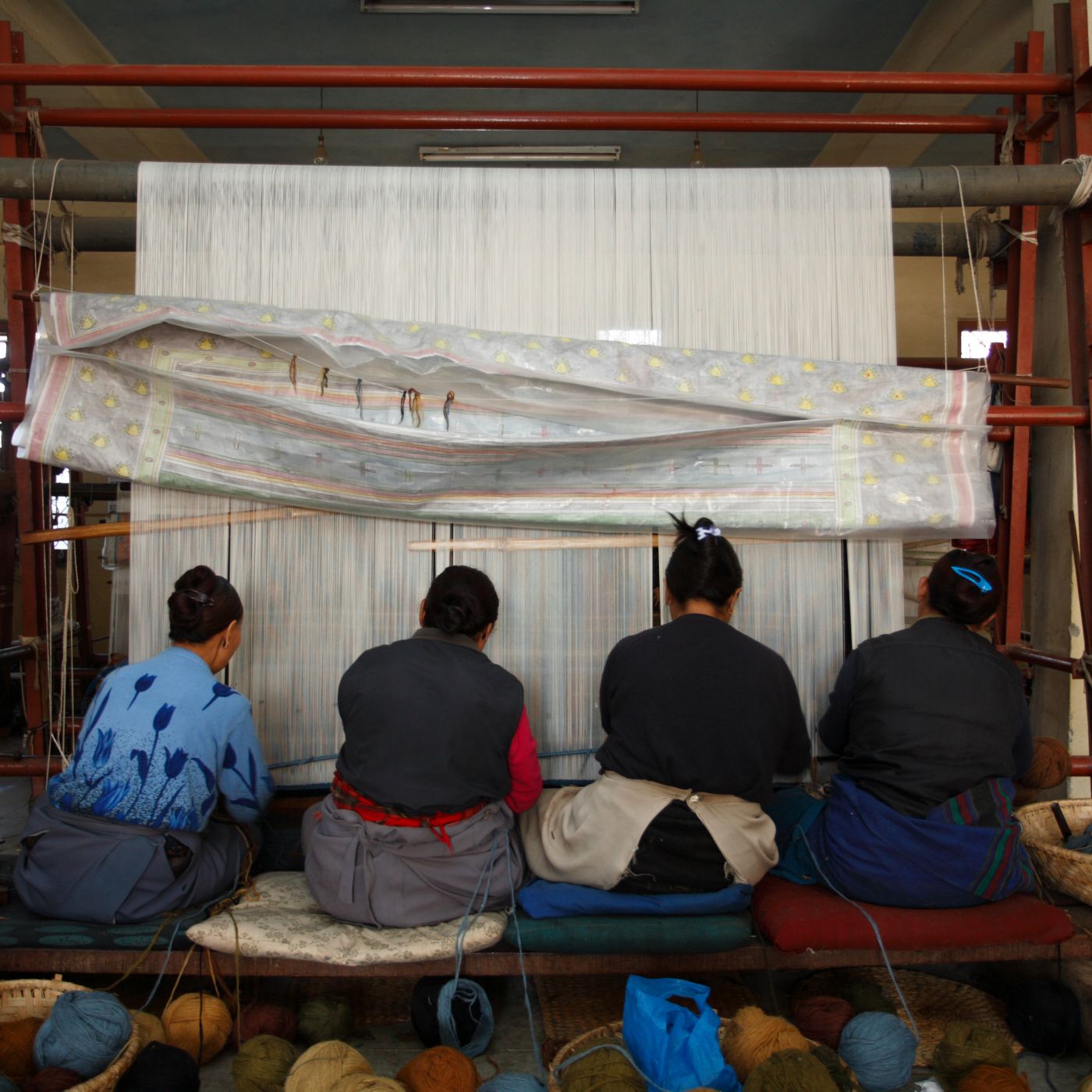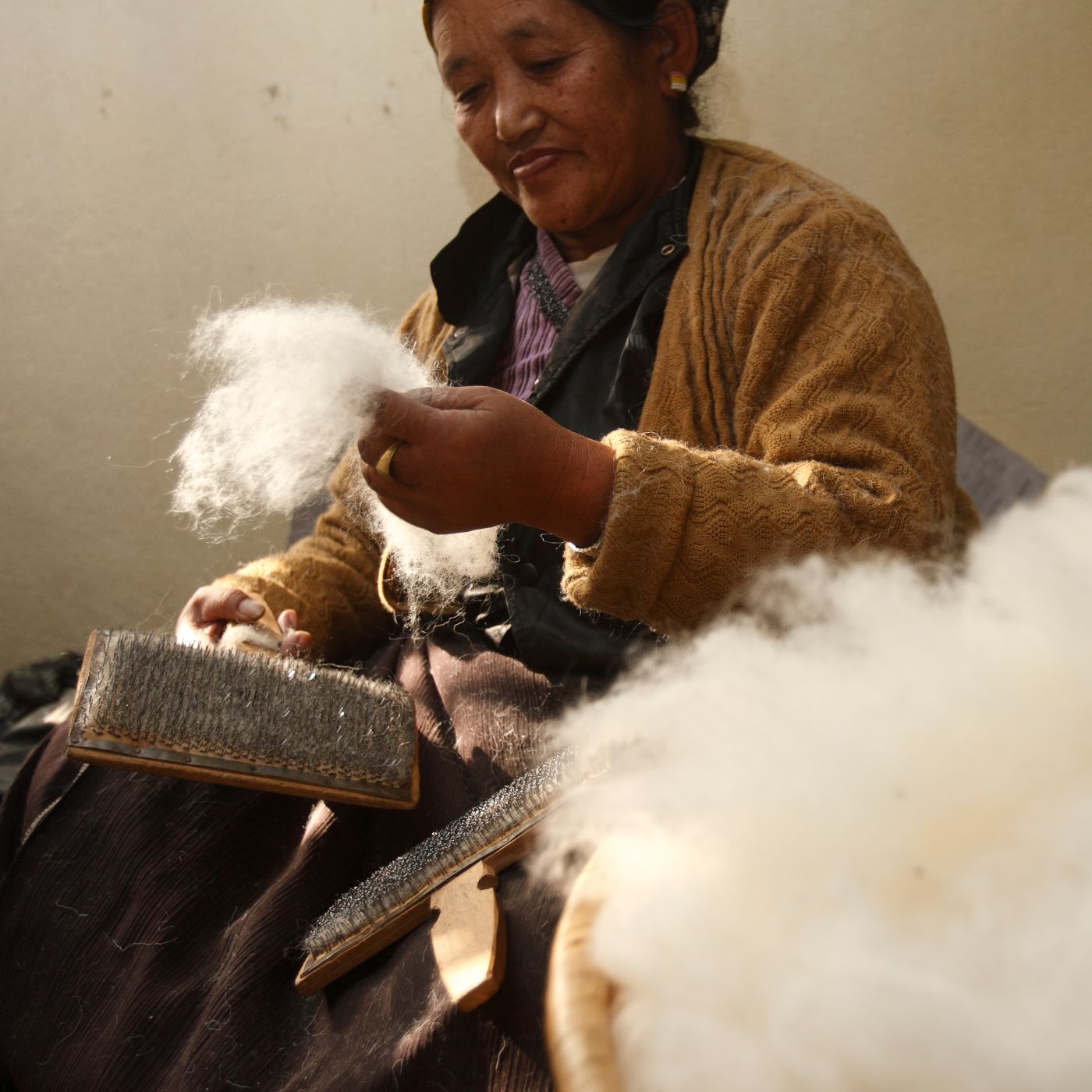
Beyond the Surface: The Definitive Guide to the Artistry of the Gabbeh Rug
The Gabbeh exist as proof that authentically crafted rugs are more than floor coverings; they hold a valuable place in the world of art and design. Rugs in the Gabbeh category are richly pigmented and wonderfully spirited, with an artistic value that speaks to their cultural significance.
Authentic Gabbehs represent the vibrant culture and landscapes of their heritage. Every piece is a vessel for the time-honored stories and artisan traditions that shaped the rug-weaving world, still passed down through generations today. Pronounced “gah-bay,” these traditional hand-knotted Persian carpets are made with high-quality wool yarn, sporting bold designs that work beautifully in spaces of all kinds.
To know the Gabbeh is to love them. Discover why rugs in this category are truly captivating artisanal works that stand the test of time.
The Gabbeh: History and Symbolism

“Gabbeh is an historic name applying to a specific type of coarse tribal weaving by an Iranian ethnic group. It is also now the name given to the least finely-knotted carpets in the general category. One will see these in our selection. Our designs attempt to capture the spontaneity that was inherent in the original tribal weavings for use for many generations. Each Gabbeh is not only an original artwork, but a story passed from one generation to another.”
- James Tufenkian
The origins of the Gabbeh are traced to nomadic tribes of Southwestern Iran, where they have been meticulously crafted by skilled weavers for generations. These hand-woven works embody the essence of the Persian culture from whence they emerged, carrying tribal stories that traverse time and evoke a sense of profound curiosity.
Gabbeh weaving is an art form deeply entwined with the nomadic lifestyle—from its colors to its motifs. The earthy ochres, terra cottas, and deep brown tones reflect the arid desert landscapes the nomads roamed, while vivid blues and greens capture the rivers and lush meadows of the region. These vibrant colors are woven into motifs and symbols that convey stories and emotions inspired by the nomadic experience of their weavers.
Often the product of improvisation, the Gabbeh’s geometric forms, nature-inspired emblems, or rhythmic patterns reveal the cadence of tribal life. Designs often speak to the spontaneity of the natural world, symbolizing prosperity, fertility, protection, and the cyclical nature of existence.
Gabbeh rug weaving is driven by the artistic spirit of its craftsperson. The name has come to refer to coarsely hand-woven rugs with a distinct individuality not often seen in other varieties of Persian carpets. Variations in patterns, irregularities, and rustic imperfections become an integral part of the Gabbeh’s beauty.
Though they employ ancient techniques, designs, and traditions, the Gabbeh remain timeless. Everything from their construction to their composition bears witness to a resilient tribal heritage that continues to endure even in a rapidly changing world.
Why Are Gabbeh Worth the Investment?

By nature, Gabbeh rugs represent the wealth of art, heritage, and culture that can be found in a hand-knotted carpet. Explore why investing in an authentic piece is a decision that rewards your space with a lifetime of value.
Heritage
Every step of the Gabbeh process is crucial to its character. The rugs hold the legacy of generations that crafted each knot by hand. To touch one is to create a connection with the lineage of skilled artisans whose work and dedication survive through these woven tapestries. An authentic Gabbeh invites this heritage into a living space, adding meaningful depth instantly.
Design
Because they are renowned as improvisational works, Gabbeh designs are inherently playful. Their vivid hues and design patterns create more than just a piece of decor. Their motifs hold meaning through abstract or geometric shapes and harmonious color combinations that evoke a sense of energy and expression. In person, this artistic spirit becomes contagious, even tangible.
Craft
At their core, Gabbehs represent a steadfast commitment to authentic carpet weaving. True Gabbehs are handwoven with an unmatched skill that takes considerable time to complete. This is apparent even at first glance. They speak to the potential of human artisanship capable of creating something with longevity in both form and function.
Quality
The use of high-quality, luminous wool yarn is the cornerstone of their value. Traditionally 100% wool, an authentic Gabbeh rug is crafted with yarns that feel soft yet resilient underfoot, and not prone to shedding or fading.
“All the Gabbeh in our collection feature fantastic Iranian sheep wool yarn, hard-carded and hand-spun. Wool has always been the starting point for evaluating a rug. It has been so since I first began. The yarns in the Gabbeh category are long fiber, lustrous, and carry beautiful variations in shade and character, all natural colored or vegetable dyed. Our Gabbeh benefit from these charming variations in color with an individuality in each piece. Hand-woven by artisans, Gabbehs are designed to last a lifetime if properly cared for.” - James Tufenkian
How Are Gabbeh Made?

Delve into the fascinating process of creating a traditional hand-knotted Gabbeh, the way they are intended to be woven, from beginning to end.
1. Selecting Fine Materials
The process begins with the careful acquisition of premium Iranian wool known for its softness, shine, and durability. Artisans choose the wool to ensure it meets the highest quality standards. The wool is washed, carded, and spun—all by hand—to create a strong and supple yarn that will serve as the foundation for the Gabbeh.
2. Forming the Design
Gabbehs are characterized by free-flowing patterns that draw inspiration from many sources. In some cases, their designs are premeditated abstractions of cultural stories and experiences. In others, they’re created as the weaver goes along. Whatever the artistic vision, traditional colors and motifs take shape in simple, whimsical, or modern-feeling designs.
3. Dyeing the Wool Yarn
Natural and vegetable dyes are traditional for the Gabbeh’s wool. This ensures the yarn remains highly pigmented. These dyes are stable yet result in beautiful variations in color even within individual works. Undyed wool may be used to create contrast with bold, lively colors, but you can also find entire pieces crafted with shades of undyed wool in more neutral tones.
4. Hand-Knotting the Rug
Artisan weavers meticulously tie individual knots onto vertical warp threads with precision. Rugs in the Gabbeh category traditionally demonstrate a particular thickness, as they’re knotted at a lower density than other Persian rugs. This process is intricate and time-consuming, as knots are woven row by row until the weaver’s desired dimensions and patterns are achieved.
How to Judge the Quality

Recognizing the mark of exceptional carpet production requires a discerning eye. To assess the quality of an authentic Gabbeh, consider these indicators.
Production
High-quality Gabbeh carpets are hand-woven, an endeavor that preserves the authentic heritage of these rugs. Rugs in this category typically feature coarser knots that create a denser pile, with the reverse pattern of the front visible on the back of the rug. Rugs created through other means lack the durability and character that make genuine Gabbeh exceptional.
Character
The appeal of a Gabbeh lies in its traditional techniques and designs rather than perfection. Historically, the very nature of Gabbeh rugs is born from improvisation. Unlike commercially made rugs that may feature standardized themes or colors, hand-knotted Gabbeh possess charming irregularities that capture the spontaneity inherent in the original tribal weavings.
Design and Color
Gabbeh designs may feature bold hues and patterns that portray a scene or feeling, or they may display subtler, modern color field designs in the vein of Rothko. No matter the color story, traditional Gabbeh weavers use wool yarn hued with high-quality vegetable dyes to create a vibrant, highly colorfast piece. The colors in an authentic, well-made Gabbeh rug will not bleed. To test colorfastness, perform a quick dye test with a damp white washcloth and examine for color transfers.
Materials
The wool used to craft rugs in the Gabbeh category plays a significant role in its overall quality. Trace the wool back to its source. One of the hallmarks of a high-quality Gabbeh is premium, pliable wool that exhibits a noticeable luster. In addition to beautiful texture and sheen, high-caliber wool ensures long-term resilience.
Why a Gabbeh Is Perfect for Your Home
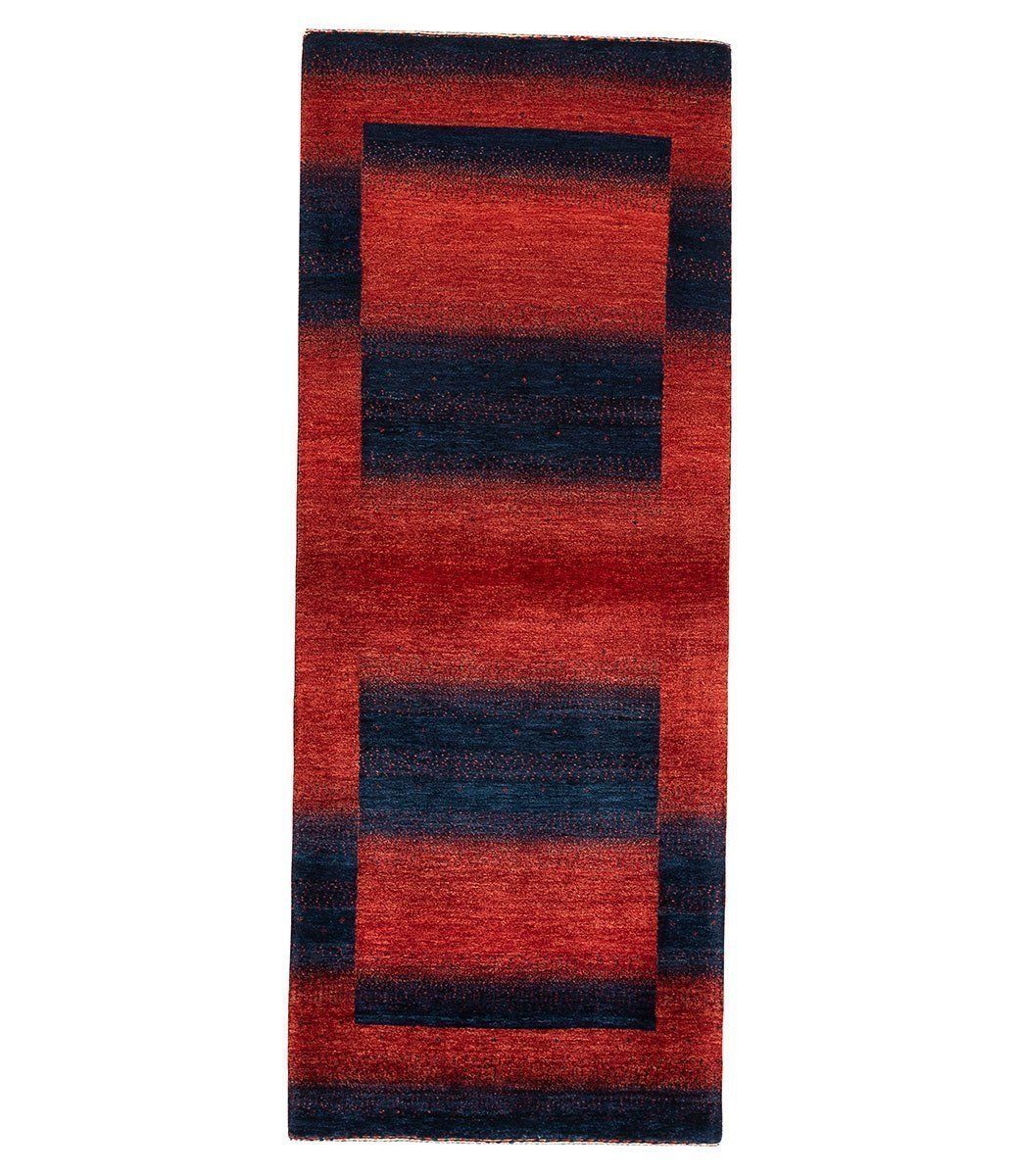
Gabbehs come in many forms, which makes them an excellent choice for a vast array of styles. Their weaving techniques and materials also offer a host of benefits for your home:
- Versatility—Their variety in pattern, design, color scheme, and story provide options for modern, traditional, minimalist, bohemian, classic, and many other decor styles.
- Durability—The thick, 100% wool pile and knotted construction make them suitable for nearly any room and a durable choice for high-traffic areas.
- Individuality—No two carpets are precisely alike, with unmatched design integrity that can only be found in original works of art.
- Artistry—The raw beauty that makes these carpets special comes from the infusion of meaning through both the weaving process and pattern.
How to Style a Gabbeh

Styling a Gabbeh allows the introduction of a one-of-a-kind piece to your space that cannot be replicated. These styling techniques bring out the best of a Gabbeh rug in any environment.
Create Contrast
Rugs in the Gabbeh category work beautifully in modern minimalist spaces. Colorful Gabbeh can provide a striking contrast against neutral color schemes, spotlighting the rug’s vivid hues and patterns in full. The clean lines and simplicity of modern or minimalist decor complement the rich complexity of these carpets.
Embrace Eclectic
Gabbehs thrive in multiform decor settings. They pair wonderfully with patterned throw blankets, textured pillows, and a wide range of furniture. With bold colors, they can take center stage among different elements of design while creating visual harmony among assorted furnishings.
Opt for Organics
The intrinsic irregularities of Gabbeh designs play well with decor that incorporates natural elements. Indoor plants, wooden furniture, woven baskets, and raw metals combine with the rug to foster a peaceful ambiance, particularly with earthy tones that harmonize with the warm hues and natural dyes.
Mix and Match
Pattern mixing is perfect for rugs in the playful Gabbeh category. Their bold motifs can be complemented by other patterns in and around the room. Balance the scale of patterns to create visual dynamics.
Larger Layers
Consider placing your Gabbeh on top of a larger, solid-colored rug to add depth and texture. This highlights the intricate details and patterns of the carpet, creating layered dimensions. Different textures like jute or sisal are interesting base layers that can elevate the overall aesthetic.
How to Maintain a Gabbeh

Though easy to care for, maintaining the beauty and longevity of your Gabbeh requires mindful care and attention. These essential maintenance tips help your rug remain vibrant and durable for years to come:
- Vacuum Regularly: Use a low-power setting or a handheld attachment on your vacuum to remove dirt and loose debris weekly.
- Address Spills: High-quality wool yarn repels moisture, but any spills should be blotted—not rubbed—promptly with a soft, clean cloth, starting outward and working in.
- Avoid Heavy Furniture: Heavy pieces can compress the wool fibers and leave unsightly indentations. Use furniture pads or coasters to distribute weight evenly.
- Rotate Occasionally: Uneven fade and areas of over-wear can be prevented with regular rotations of the rug in its typical placement.
- Clean Professionally: Every few years, have your rug cleaned by a professional specializing in high-quality, delicate rugs.
FAQ

What is Gabbeh style?
Gabbeh style rugs are a bold, spirited, and distinct form of design that originated from nomadic tribes of Southwestern Iran. Gabbeh are characterized by vibrant colors and abstract, playful motifs. They are inherently simple, with raw artistry that showcases the spontaneity with which they are created.
Gabbeh rugs possess a unique style that celebrates a sense of improvisation and expression. Weavers infuse their own creativity into each hand-knotted piece. The use of high-quality wool and natural dyes further add to their appeal, capturing the essence of the nomadic heritage of the tribes who crafted them.
Where are Gabbeh rugs from?
Gabbeh rugs originally come from nomadic peoples of Iran, including areas such as Kurdistan, Luristan, and Fars in the Southwest. The word “Gabbeh” means “raw or unfinished” in Persian, reflecting the nature of the weaving method used by Qashqai, Bakhtiari, and Luri tribes that produced them for centuries.
These rugs were initially created by artisans for their own use as floor coverings, bedding, bags, and other applications. Elements of the nomadic lifestyle inspired the rug’s motifs. Eventually, their unique and distinctive designs elevated them from utilitarian pieces into the realm of fine art.
What defines a Gabbeh rug?
Gabbeh rugs can be defined by several characteristics, including their rich color palette, playful and abstract designs, naïveté in their motifs, and hand-knotted artisanship. Many feature bold hues such as rust red, earthy browns, golds, vivid greens, vibrant blues, and warm ivories used to create contrast with geometric shapes and nature-inspired motifs throughout the work.
These rugs are typically crafted with high-quality wool using hand-knotting techniques that result in a dense and durable pile. The knots in these carpets are coarser and not as finely woven as other Persian rugs, yet the piece remains soft and exceptionally luxurious underfoot.
How are Gabbeh rugs made?
Rugs in the Gabbeh category are made using traditional weaving methods passed down through generations, with hand-knotting techniques that create the characteristic pile of these carpets. Weavers begin with high-quality wool that they carefully wash, card, and spin by hand to create soft yet resilient yarn.
Gabbeh weaving is often improvised, inspired by surroundings and stories of nomadic tribes. Weavers tie individual knots one by one, row by row, onto vertical warp threads to create bold, abstract designs. These rugs are rarely uniform, forming a charming individuality unique to each piece.
Explore the World of Artisan Gabbehs

The rich heritage and exquisite artisanship of the Gabbeh category make these rugs a beloved asset in the world of Persian carpets. Tufenkian’s Gabbeh collection encompasses diverse styles, each with an individuality that cannot be imitated or reproduced.
Tufenkian’s collection of Gabbehs features exclusive carpets that cannot be found elsewhere. We currently have the broadest selection of what is available in the US under the current import embargo. Now, you can invest in a rug that not only enhances your space but serves as a testament to its original culture and enduring beauty.
Shop for a Gabbeh in our collection or visit a showroom to Test Drive one today.


